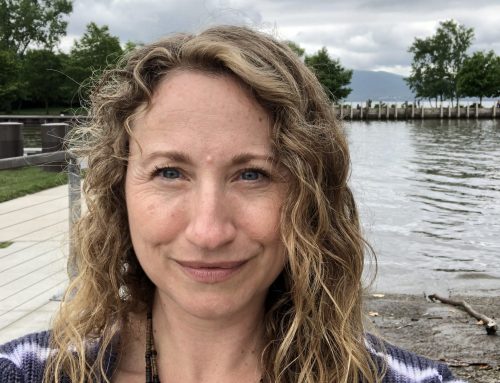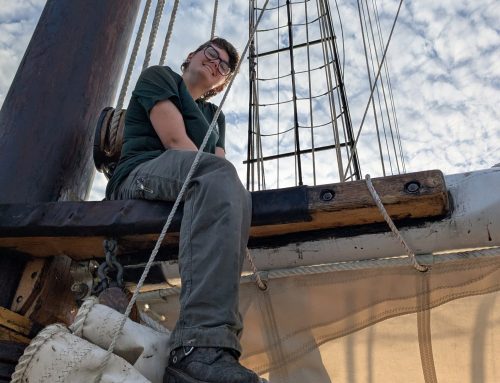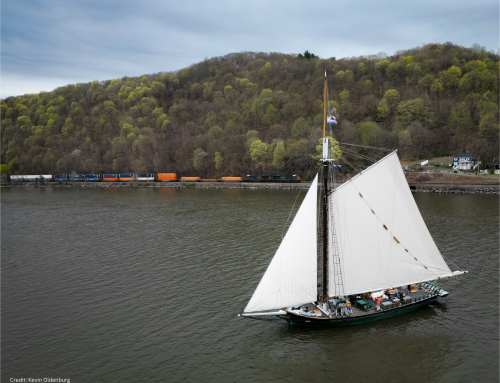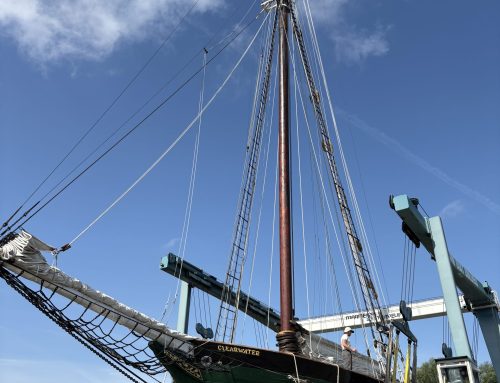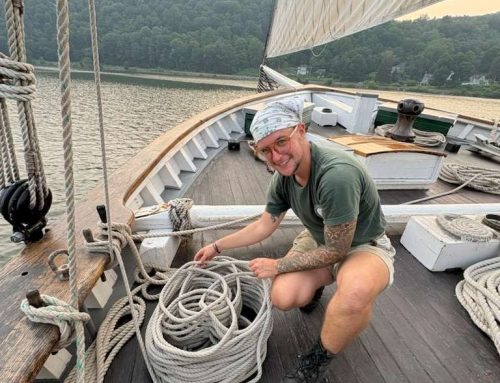Seeks Public Input on Green Urban Corridor Planning Project
BEACON, NY – Clearwater and the Fall Kill Watershed Committee are poised to transform the urban portion of the Fall Kill creek into an attractive community resource, accessible through walking trails, while improving water quality. The overall improvement of the entire Fall Kill corridor will help create a sense of community ownership and caring, and will ultimately enhance the quality of life for residents, according to Jeff Rumpf, Hudson River Sloop Clearwater’s Executive Director.
The work is part of a continuing project to improve water quality throughout the Fall Kill Watershed and funded through a recently awarded $52,500 Hudson River Estuary Grant from the NYS Department of Environmental Conservation, supported through the NYS Environmental Protection Fund. The Fall Kill Creek flows into the Hudson River near Walkway Over the Hudson NYS Park in Poughkeepsie.
“The Hudson River Estuary Program supports local partnerships to help people enjoy, protect and revitalize the Hudson River and its Valley,” said Fran Dunwell, Estuary Program Coordinator, “Working together, we can conserve this unique natural area–a source of clean water and vital habitat –to achieve a cleaner, greener region and support local economies.”
Hudson River Estuary Grants are awarded each year to help local municipalities and non-profits achieve the goals of the Hudson River Estuary Action Agenda, the state’s blueprint for protecting and revitalizing the Hudson River and its valley. More information about the Hudson River Estuary Program and the Action Agenda can be found on the web site at www.dec.ny.gov/lands/4920.html.
A major component of the initiative is the Fall Kill Creek Green Urban Corridor Planning Project. The goal of the project is to create a Master Plan for a walkable green corridor that roughly follows the path of the creek, bridges connections with community centers and the City’s urban core, and incorporates Green Infrastructure practices such as the installation of rain gardens, rainbarrels, porous pavement and vegetated swales to manage stormwater runoff to reduce untreated inputs into the Fall Kill. In addition, detailed engineered design plans with cost assessments will be created for 3-5 Pilot Sites. These plans will be ready for submission to potential funding sources with the goal of having these sites constructed in the near future.
Clearwater, as coordinating member of the Fall Kill Watershed Committee, will work with a diverse array of partners including community members, municipal officials, and youth on this multi-part project. Janette Kim, Director of the Urban Landscape Lab at the Graduate School of Architecture, Planning and Preservation at Columbia University, is leading a consulting team selected by the Committee to design the plans with input from the community. The team also includes Eric Rothstein, Managing Partner and Engineer for eDesign Dynamics as the Habitat and Hydrology specialist, Alice Feng of Landmine Studio as the Landscape Designer, and Matthew Slaats of Poughkeepsie-based PAUSE as the Community Outreach leader.
Partner organizations such as Fall Kill Watershed Committee, which includes Hudson River Housing, Middle Main Revitalization Coalition, Mid-Hudson Heritage Center, PAUSE, and Mid-Hudson Children’s Museum, will also provide support and in-kind services to supplement the $52,500 Hudson River Estuary grant. In addition, Marist College and the Urban Landscape Lab at Columbia University will provide graduate student interns to provide research and technical support. Dutchess Watershed Coalition members will provide volunteers to participate in events such as Fall Kill stream cleanups. Clearwater will continue to work closely with Poughkeepsie City planners throughout the development of the project.
The Hudson River Estuary Grant from the NYS Department of Environmental Conservation is complemented by coordinated efforts associated with other active Clearwater grants, including an EPA Environmental Justice Small Grant for Climate Justice, the Hudson Valley Regional Council Green Infrastructure Grant, and the recently awarded grant from the Insurance Industry Charitable Foundation Grant.
Green Urban Corridor Planning Project Public Meeting
“The input and engagement of the people of Poughkeepsie is key to the success of not only this project, but all of Clearwater’s efforts with the Fall Kill Watershed Committee. We believe that working from the ground up starting from a grassroots level is the most effective way to ensure community ownership of the initiative, which will lead to increased stewardship, improved water quality, and ultimately the revitalization of the Fall Kill as an important economic and community resource,” said Ryan Palmer, Clearwater’s Green Cities Project Coordinator, who also serves as Coordinator for the Fall Kill Watershed Committee.
A public meeting will be held July 6, 6:00 PM – 8:00 PM at the Public Safety Building, 505 Main Street, Poughkeepsie, NY, to present initial Master Plan designs, prioritize potential Pilot Sites, and gather community input. Local residents, business owners, representatives of community groups, and all other stakeholders are encouraged to attend and participate in the session. Please contact Ryan Palmer, Clearwater Green Cities Project Coordinator, at ryan@clearwater.org or 845 265 8080, extension 7114, if you plan to attend.
In addition, the Committee will create and install educational signage along the creek, and plan and implement volunteer cleanups and outreach programs as part of the Dutchess Watershed Coalition’s Watershed Awareness Month (http://dutchesswam.com). These events provide an opportunity for community volunteers and youth to participate in hands-on efforts to clean up and beautify the watershed, and enjoy family-friendly educational activities, celebration, and networking opportunities.
A final component of the initiative will be to perform a restoration opportunity assessment, which will commence in the fall with support from Marist College’s Environmental Studies Department. This assessment will utilize protocols from the Center for Watershed Protection’s Urban Subwatershed Restoration Manual Series. This includes Neighborhood Source Assessment (“NSA”) to characterize and prioritize neighborhoods in the City, and a Pervious Area Assessment (“PAA”) to identify upland areas for restoration. The goal of these assessments is to identify and prioritize future restoration sites.
The project, as part of Clearwater’s Green Cities Initiative, will provide a model framework to assist other communities of the Hudson River Valley in applying sustainable principles to improve the quality of life on all levels through municipal planning, community development and education, while establishing a forum for working with Hudson River communities towards waterfront revitalization.
Jeff Rumpf, Clearwater’s Executive Director added, “This essential grant for the Fall Kill Watershed will allow Clearwater to continue our work to improve the environment while improving the economy and improving people’s lives.” Rumpf believes the plan fits in well with Governor Cuomo’s green jobs and smart growth proposals, announced in his State of the State address on January 5, 2011.
The Fall Kill Watershed is located in Dutchess County and encompasses five municipalities, including the Towns of Clinton, Hyde Park, Pleasant Valley and the Town and City of Poughkeepsie. Until recently, the Fall Kill has largely been ignored, however awareness is growing and the potential for the creek to become an asset to city residents and surrounding community is being realized. A healthy Fall Kill is the result of proper stewardship of the surrounding land, which, in turn, increases the quality of life for those living within the watershed. The Fall Kill Watershed Committee is an independent community-led coalition, coordinated by Clearwater, dedicated to revitalizing the creek.

